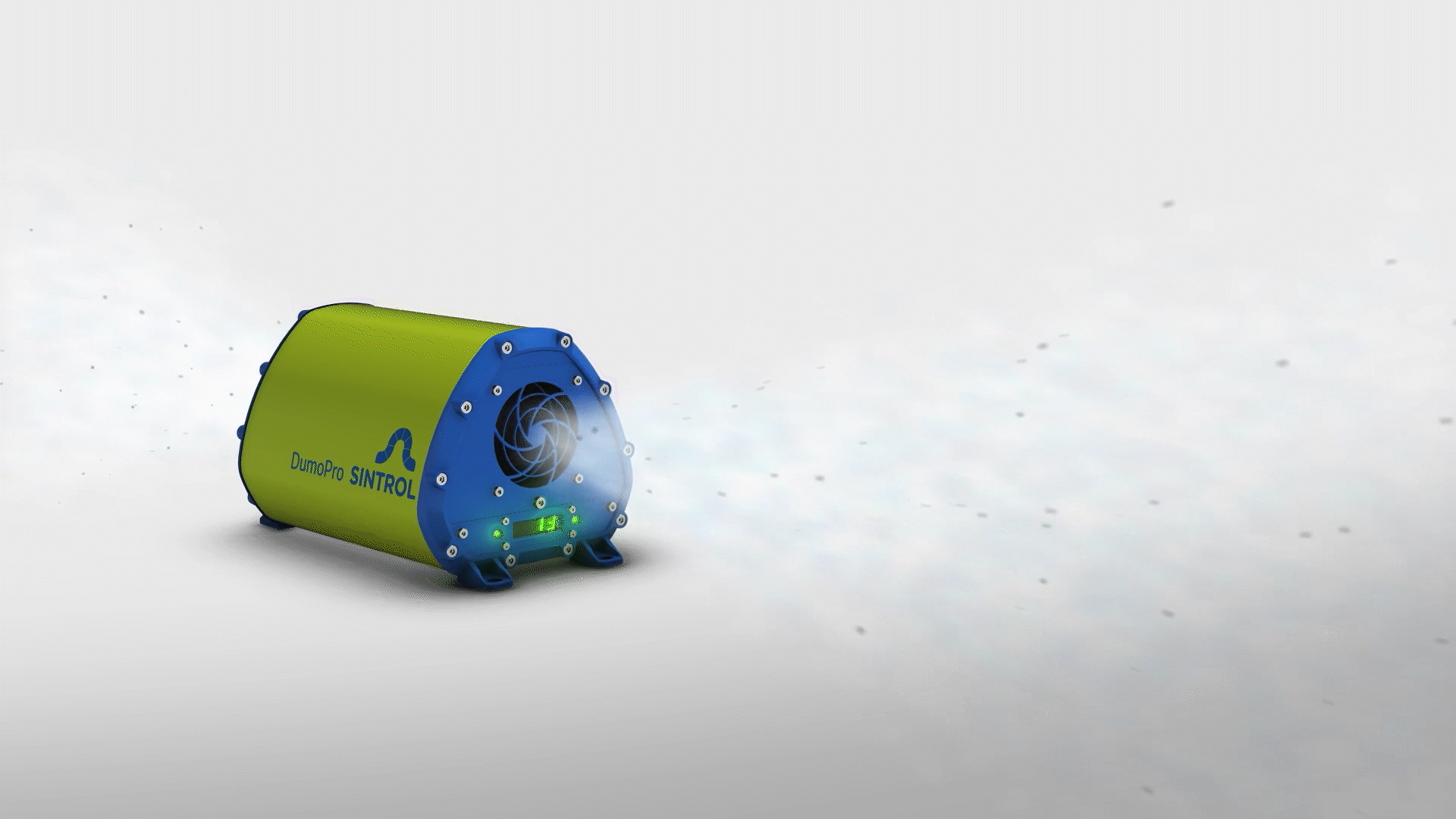Where there is dust, there is the problem. Operators often have to rely on a visible dust cloud to give them information that something is wrong. But what if there are no operators present?
The future of dust monitoring is automated, continuous and in real time
The progress of technology in industrial bulk and powder handling has brought enormous improvement to operational efficiency and productivity. As production volumes have increased and industrial personnel staff has shrunk, threat management against dust explosions has become more challenging. Grain, sugar and other food industries are spending a lot of time, effort and money on the prevention of dust explosions.
Usually required by law, any organisation processing or handling combustible dust must perform an analysis of their dust hazards (DHA). The focus is usually on the typical points in the process where primary explosions tend to occur such as baghouses, silos, enclosed conveyors, cyclones etc. Focusing on possible secondary explosions is extremely important since historically secondary explosions are the most fatal. Material discharge from the process is common and usually suggests an interruption in the process. Continuous real time monitoring for such interruptions is often very beneficial as another line of defence.
A rugged and reliable measuring method to help mitigate the risks of dust explosions
Sintrol manufactures high quality, low maintenance dust monitors for the detection and monitoring of dust concentrations. Historically the most common applications for Sintrol dust monitors have been inline industrial dust measurement solutions for process control, filtration leak detection and emissions monitoring.
The years of experience in high dust industrial environments and a proven measuring technology brought the development of the DumoPro, a unique ambient air monitor that can withstand the high dust concentrations present in factories.
The measuring principle: When solid particles come into contact with or pass by an insulated conductive probe, they induce a charge. This charge is then amplified, filtered and converted into a signal that is proportional to the dust concentration.
This phenomenon of measuring the charge of particles is in general know as triboelectric monitoring and with development and progress, Sintrol’s Inductive Electrification Technology evolved. This measuring principle is suitable and preferred to be used in high dust environments because it isn’t as sensitive to contamination as other measuring principles.
A unique auto setup procedure allows for easy start-up and commissioning. The auto setup function is activated in normal process conditions. Once activated, the dust monitor will automatically establish a “normal air baseline” and will scale the operating range and alarm settings. In some cases, if needed it is possible to correlate the output to mg/m3.
Along with other credentials, the DumoPro for high dust values is certified for use in potentially explosive areas.
24/7 dust monitoring in high-risk areas will immediately alert operators when abnormal dust levels are detected. If there are abnormal dust levels, it will allow the operators to define the source and areas and react quickly. No longer do plants have to rely on operators to notice a dust cloud to alert of possible events.

The chances are low, and the risks are real
The dangerous mentality of “we have never had an explosion” can be fatal. Most dust explosion occurrences are complete surprises in facilities that have been operating for decades. The awareness of explosions has improved, and operators are implementing numerous safeguards and precautions to keep the working environments safe.
However, while dust can be controlled, managers often run into the problems of not getting information of interruptions or unexpected events. Too often, the dust cloud of an unexpected event is left up to operators to notice. As plant cleanliness and good housekeeping practice is crucial to minimise accumulation of combustible dust, unmanned areas are often high-risk areas. Monitoring for dust clouds and monitoring dust to avoid dust accumulations can alleviate the hazards considerably.
Risk areas / typical points of measurement
High-risk area examples in milling and grain handling are:
- Enclosed bin-deck areas
- Pelletising areas
- Receiving tunnels
- Hammer mill areas
- Enclosed silo skirt areas
- Mixing rooms
- High risk processing areas (upsets such as leaking gaskets)
When working with combustible dust, companies usually have numerous precautions, policies, procedures, and equipment in place so that when they all work together, it will maximise safety.
Real time dust monitoring for the detection of upset dust conditions can be just one more safeguard to help mitigate the risks. Good housekeeping practice and confidence in dust management should be the norm. Manual grab samples have their place, but it is time for operators to stop relying on them as their primary method of measuring dust.
Why not use dust, one of the biggest nuisances in bulk and powder handling as a process variable to track for unsafe working environments or in some cases possibly warn for potential explosive environments?
Contact us:

John Korpi
Sales Director
Dust Monitoring Solutions
USA, LATAM, APAC
+358 9 5617 3697
+ 358 50 463 5452



 +358 9 5617 3697
+358 9 5617 3697